A little deeper…
Below is the article written by Charlotte Jensen (Art Slant Editor and SIX contributor) for SIX issue 3.
I have posted the full piece here as i would love for you all to read it.
Its not often i find my work being discussed in a true manor to how i feel about it, but this gets pretty close to the point;
INSA
Artist
In INSA’s latest film work for Channel 4’s ongoing Random Acts project, swirling, flashing bottoms slowly turn in circles, ensphered by twirling dismembered, spiked stilletoes. The camera then dives into the orifice of one of these turning backsides, and travels through a series of hoops, dubbed ‘golden sphincters’ by the artist – to suddenly emerge to a kind of oasis, with a beautifully shapely woman, derobed and reclining, gyrating under a fountain of rainbow paint that pours down on her from above. INSA received a call soon before the two-minute film, entitled “Looking For Love In All The Wrong Places”, was scheduled to broadcast (at midnight on Valentine’s) from one of C4’s chiefs – deeply concerned about the possibility of the artist’s ‘fatal anus’. Not, as one might assume, was the executive worried about the possibly offensive nature of the anus, but rather, because its effects, the aforementioned hypnotic, animated behinds, prompted evaluation for an eplilepsy warning.
It’s a story that demonstrates the undulating nature of INSA’s work, both aesthetically and conceptually. Like a mise-en-abyme, symbols (high heels, ‘tits and asses’ are INSA’s visual tropes, together with his ‘graffiti fetish pattern’) the fracturing of the female form presents a split between reality and construction, an abiding theme in INSA’s richly textured body of work; peeling back layers of antithetical forms and meanings.
Fetishistic, hallucinatory, aspirational and often uncanny, the London-based artist’s work, which appeared first on the streets around the world – “I painted wherever I went, from the age of 13 or 14” – has since shown in galleries in LA, Lisbon, Luxembourg and London, including a commission for Tate Britain, “Elephant Dung Shoes, Anything Goes When it Comes to (s)hoes” presented as part of Chris Ofili’s retrospective at the gallery in 2010.
I wasn’t sure what to expect when after a few months of cat-and-mouse I finally managed to pin the elusive international phenomenon down. Eyes darting nervously around – a cheery call came from the corner of the bustling East London café where we had arranged to meet. Not many people know what to expect of the ‘real’ INSA, in the flesh – “Surprisingly a lot of people either think I’m a woman, or assume I’m black” the artist says. This shrouded identity is an important part of the INSA output, allowing him to eschew categorization. As the artist points out, it allows people “to create an image of whoever they want to relate to, of whatever it is about my work that speaks to them”. It also reflects a central discussion in the artist’s body of work: “fantasy is always better than reality”.
Thematically and physically, the INSA fantasy world is one that simultaneously reveres and abhors the idea of its own existence. Heavily influenced by the visual iconography of Hip-hop videos and black culture, INSA is fascinated not by the act of sex – but with the fetishisation of the body in contemporary society, that ultimately redacts humans to products “it’s a mirror of the media that surrounds me”. A mirror that distorts: wildly exaggerated female curves, high heels – emblems of success that saturate Hip-hop videos and lyrics, that have often been harshly criticized as denigrating women. The images are unflinchingly raunchy, and sexily appealing, a sublimation of commodification, the height of objectification. I wonder whether this is an insidious trick; a disguised homage to the ‘sex sells’ adage. “The fact that I’m not selling anything with these images is often what seems to offend people, like if it was selling them something, then that would be a visual language they are used to!” remarks the artist, “there are billions of ‘sexy’ images out there. Why are people interested in mine? There has to be something more going on in the work”. The relationship between the viewer, and the image, is not therefore, about our relationship to one another (i.e., through the act of sex) but rather, the relationship between the viewer-consumer, and products.
It’s a formal tension that the artist clearly enjoys. Bodily innuendos are contrasted with tongue-in-cheek endorsements of products. A recent project “Girls on Bikes” further compounded this recurring inherent contradiction in INSA’s oeuvre – anonymity clashes with identity, and adulation with respect, and the artist is all too aware of his position as a male artist depicting women in this way. The public installation project features provocatively clad, voluptuous women, all volunteers, posing racily for the camera on bikes, in front of INSA walls around the world. The series has been a global hit, spreading virally online, but, the artist admits, I feel very uncomfortable when the work leaves the gallery or my website and becomes just more internet foder for sexist comments. “It’s the project I’ve been least comfortable with, because the woman in the pictures had names – they had an identity which took it to a different place than my previous work. I understand my work treads a fine line between celebration and critique of sexualized female imagery, but it is exactly this contradiction that I am interested in – it reflects many of the contradictions that makes up who we are.”
Thus INSA’s work is deeply feminist, in that it struggles with one of the fundamental, unsolvable questions at the heart of feminist theory: do we celebrate differences or fight for gender equality? The problem, perhaps, is too dichotomous to elicit an answer. What is intriguing about INSA’s art, however, is not its scepticism towards outmoded gender stereotypes, nor its rebuttal of entrenched critical stances surrounding it, but the way in which it addresses what drives us to fetishize the female body, and flags up a troubling new ideology – aligning the physical and psychological sexual urges we experience, with our desires as consumers, in an obsessive, heady world that ripples with latex, butt-pumping parties and hysterical screeds of introspection.






No Comments